“Chè” is a broad Vietnamese term for any traditional Vietnamese sweet beverage, which is commonly offered as a pudding or as a clear liquid. It is often served with coconut milk and contains fruit, vegetables, beans, seeds, glutinous rice, and tapioca powder. Despite the fact that “Chè” is slightly sweet and does not usually have the most pleasing appearance, most people are completely devoted to this unforgettable very delicious treat. When eating traditional Vietnamese food, don’t forget to include Che. There are several types of “Chè” to mention, but here are the ten finest Vietnamese sweets desserts that you should not miss when visiting Vietnam – all eaten and explained by our Hanoian native, Gia Han. !
Table of Contents
Chè Long Nhãn Hạt Sen – Logan and Lotus Seed Sweet Soup
- Form: Drink
- Serve: Warm or Cold
- Price Range: 10,000- 35,000 VND/ serving (approx. $0.45- $1.68)
“Chè long nhãn hạt sen” began in Hue, Vietnam’s old capital. am. Because of its pristine appearance, lightly sweet flavor, and multiple health advantages, “Chè long nhãn hạt sen” has become one of the most favorite sweets among locals. While preparing the dessert is not difficult, it does need a great deal of attention and patience. To begin, remove the seeds from ripe longan fruit using a sharp-pointed knife. To prevent ripping any of the longans, use a gentle knife to cut them. meat, after which they must be filled with lotus seeds and cooked with some sugar.
The thick, meaty longan, the soft, fragrant lotus seeds, and the deliciously refreshing sweet soup will captivate you. People in Southern Vietnam prepare this delicacy with dried longan because the dried fruit is available all year.
This dish is popular when served cold with ice and a few drops of grapefruit flower oil, but it is equally great when served warm or at room temperature. It is claimed that eating this dish on a regular basis would help you calm your nerves, lower your tension and exhaustion levels, and may even enhance your sleep quality.

Chè Ba Màu – Three Color Dessert
- Form: Drink
- Serve: Cold
- Price Range: 8,000- 20,000 VND/ serving (approx. $0.36- $0.9)
The major ingredients of “Chè ba màu” which translates as “three-color desert,” are three varieties of colorful beans and jelly coated in mildly sweetened coconut milk. The red, yellow, and green hues of this snack are often made from kidney beans, mung bean paste, and green jelly. These delectable treats are typically presented in colorful layers, which are then combined together when eaten. “Chè ba màu” is highly popular in Vietnam due to its attractive appearance and sweet, refreshing taste.
Nothing beats a refreshing glass of a vibrantly colored dessert on a hot summer day! “Chè ba màu” is a popular Vietnamese dessert that can be found in most Vietnamese restaurants, street sellers, and dessert shops.
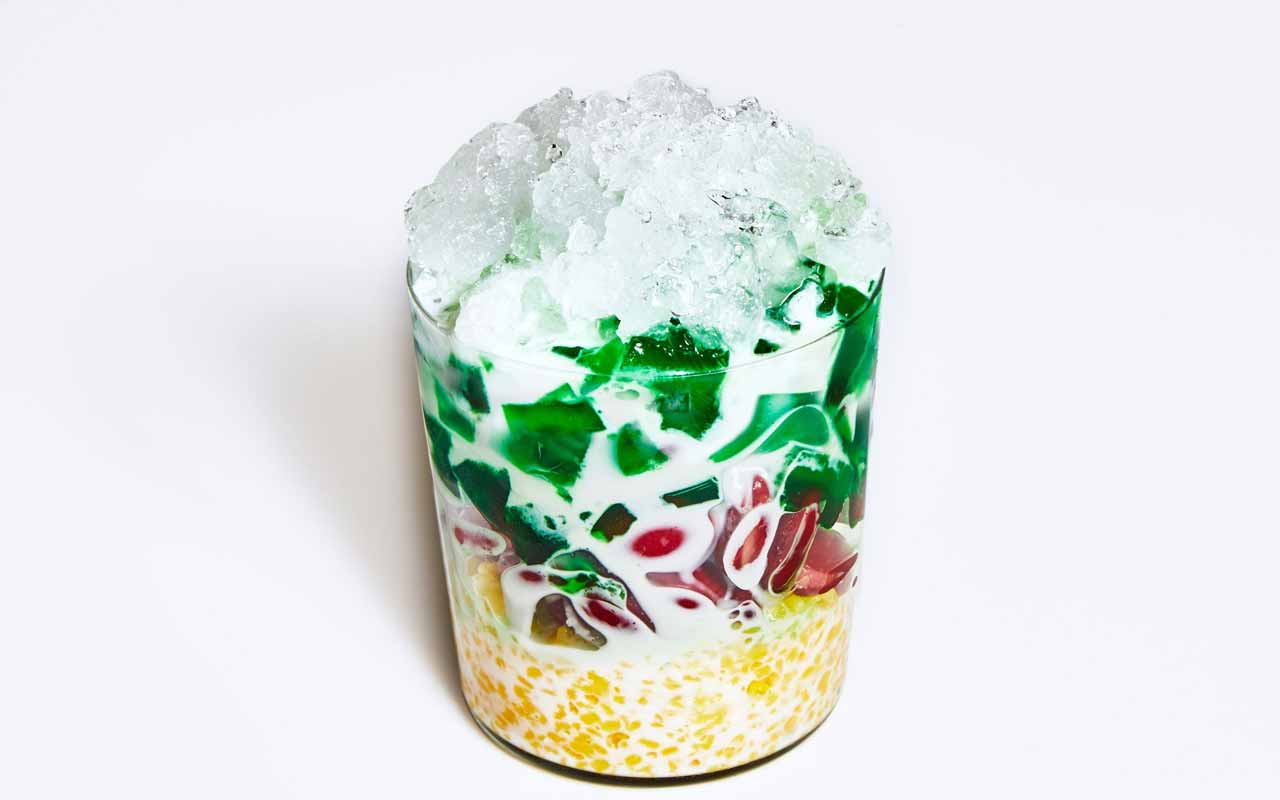
Chè Chuối – Banana with Sago Pearls and Coconut Milk Sweet Soup
- Form: Condensed Soup
- Serve: Warm
- Price Range: 10,000- 30,000 VND/ cup (approx. $0.4 – $1.35)
“Chè chuối” might be a delightful everyday sweet dish created from a flavored banana known as “Chuối xiêm.” “Chè chuối,” which is cooked in coconut milk with sago pearls, has a sweet and creamy flavor, a delicate banana aroma, and looks like pudding, a sprinkling of roasted peanut topping balances out the creamy flavor of “Chè chuối” and gives a dash of color to the dessert.
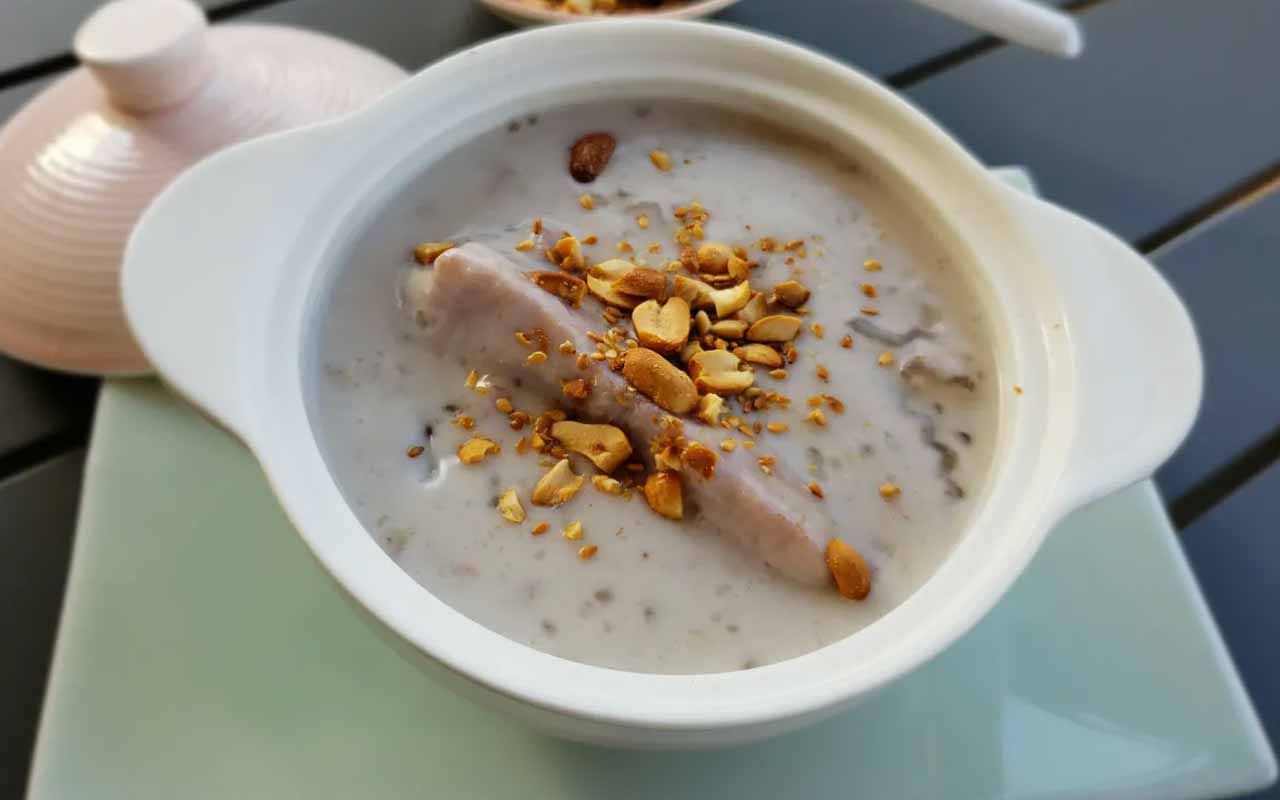
Chè Trôi Nước – Sweet Glutinous Rice Dumplings
- Form: Condensed Soup
- Serve: Warm
- Price Range: 10,000- 30,000 VND/ serving (approx. $0.4- $1.35)
“Chè Trôi Nước” is a glutinous rice dumpling stuffed with mung bean paste and cooked in sweet ginger syrup. The name of this dish literally means “floating on water,” since when cooked, the balls rise from the bottom of the pot to the surface of the soup. “Chè Trôi Nước” are served hot, topped with white sesame and, on sometimes, coconut milk.
Because of the significance of its name, which loosely translates to “fulfillment,” “Chè Trôi Nước” is frequently eaten on a child’s first birthday and other customary occasions. The chewy and gummy rice that covers the soft and savory mung bean paste below gives it a texture comparable to Japanese mochi and Chinese tangyuan. The golden gooey syrup gives the super-delicious sweet soup a sweet taste and a fragrant ginger scent!
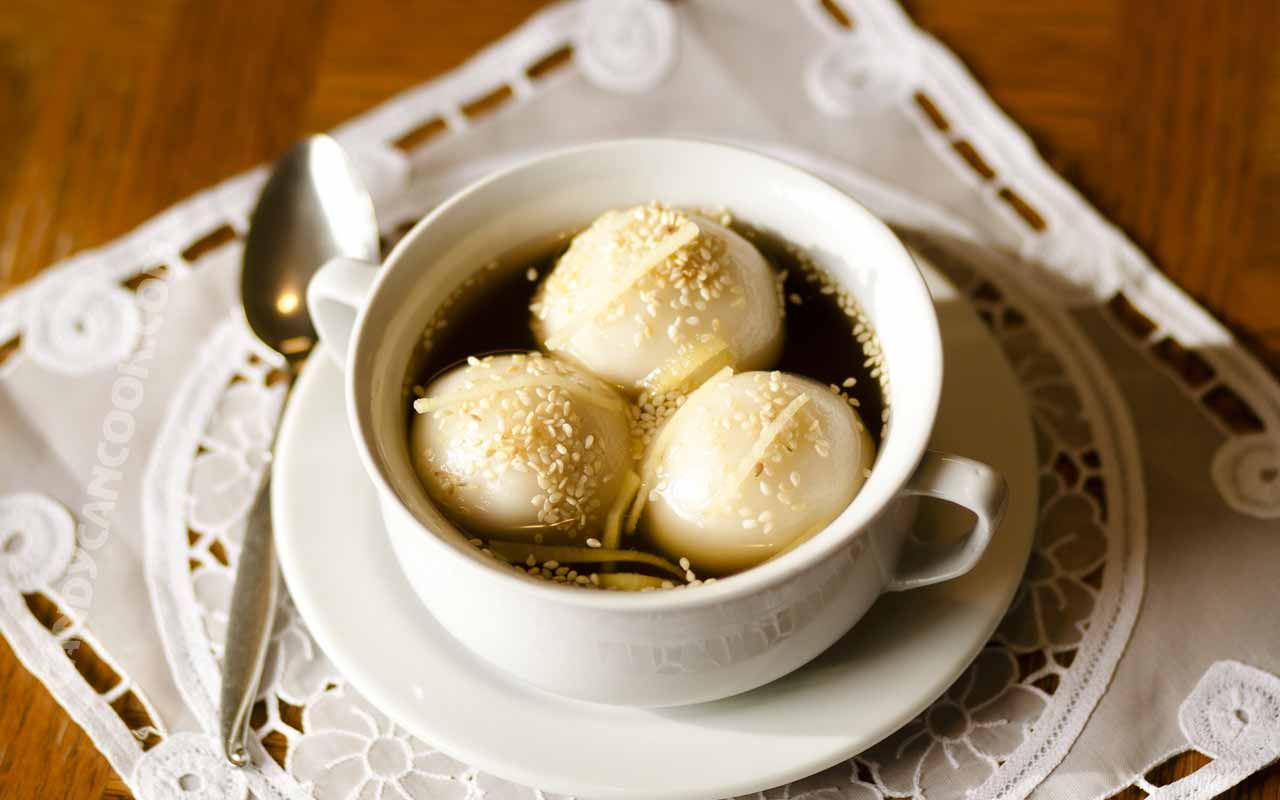
Chè Sương Sa Hạt Lựu – Rainbow Dessert
- Form: Drink
- Serve: Cold
- Price Range: 10,000- 25,000 VND/ serving (approx. $0.45- $1.18)
“Chè Sương Sa Hạt Lựu” made with agar jelly, faux pomegranate seeds, mung bean paste, and coconut milk can not only refresh your body but also give you with an excellent source of energy to help you battle the endlessly hot and humid summer days in Vietnam.
Mock pomegranate seeds are brightly colored seeds made of water chestnut that has been chopped into little pieces and coated with tapioca scratch. It’s a lot of fun to eat these pomegranate seeds since they’re crisp on the inside yet mushy on the exterior owing to the tapioca shell.
Agar jelly, on the other hand, gives you a more refreshing sensation. It’s chilly, somewhat sweet, crunchy, and soft, and it complements the smooth, creamy coconut milk nicely. Agar has no sugar, fat, or carbs and is high in fiber.
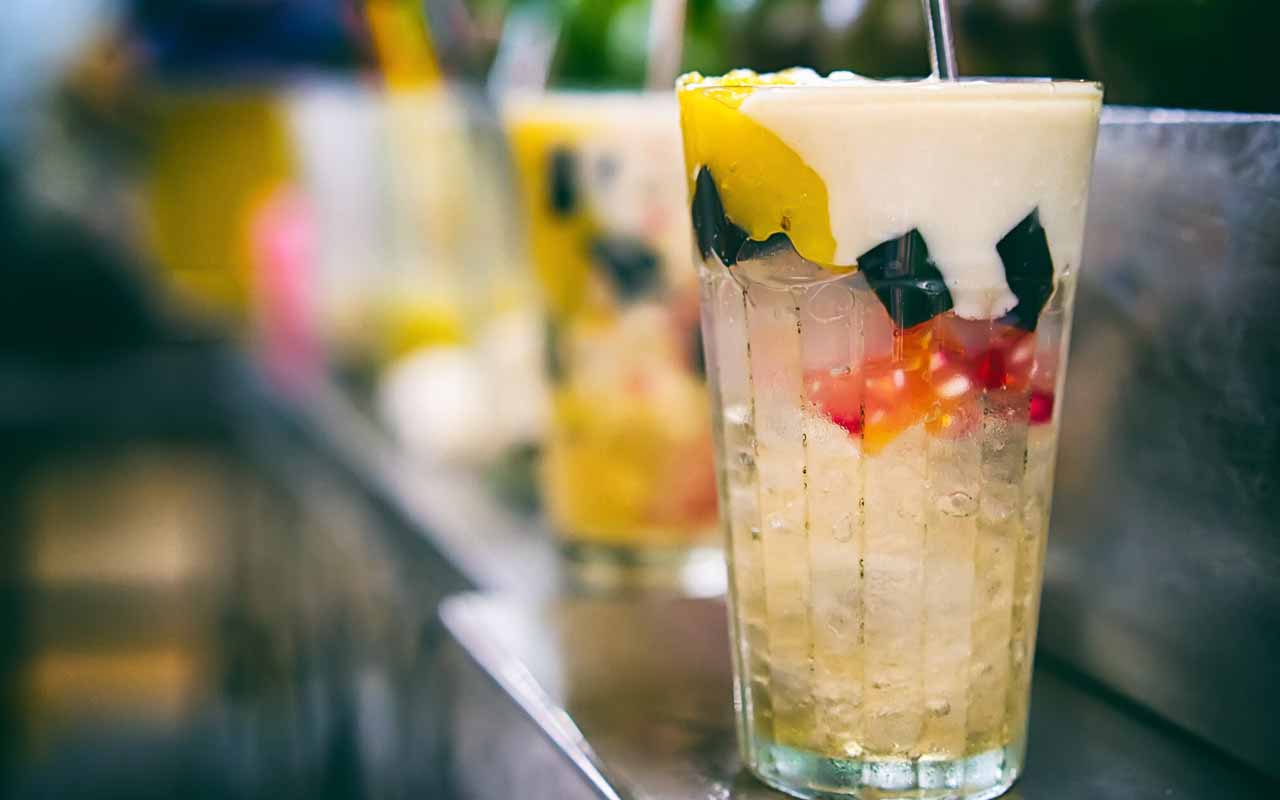
Chè Bà Ba – Sweet potato, Taro and Cassava Dessert
- Form: Condensed Soup
- Serve: Warm or Cold
- Price Range: 8,000- 20,000 VND/ serving (approx. $0.36- $0.9)
“Chè bà ba” is a traditional Southern Vietnamese dessert made with a variety of ingredients. This delectable delicacy is composed of square chunks of taro, cassava, and long sweet potato that have been thoroughly cooked in coconut milk and are adorned with transparent tapioca pearls.
With its creamy richness and lasting sweetness, “chè bà ba” is a great snack for both hot and cold drinks. This already wonderful dish may be made even tastier by topping it with toasted sesame seeds or minced peanuts.
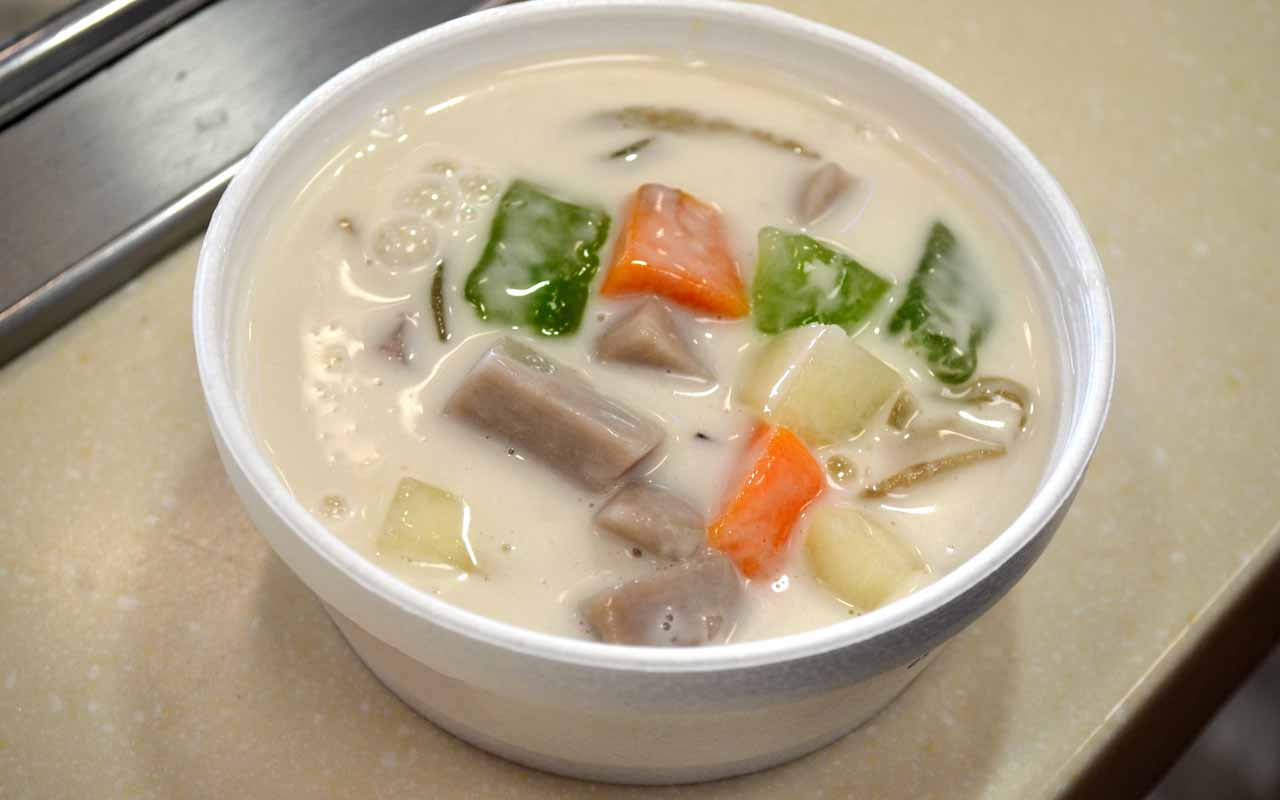
Chè Bắp – Vietnamese Sweet Corn Pudding
- Form: Pudding
- Serve: Warm or Cold
- Price Range: 8,000- 10,000 VND/ serving (approx. $0.36- $0.45)
“Chè bắp” is a traditional Vietnamese pudding or dessert soup made with sweet corn and sticky rice, and it is frequently topped with thick, syrupy coconut milk and toasted sesame seeds.
It may be eaten hot or cold as a snack at any time of day! The natural sweetness of corn blends with the creamy coconut milk in a chewy texture of glutinous rice, creating a delightful summer treat.

Chè Thái – Vietnamese Fruit Cocktail
- Form: Condensed Soup
- Serve: Warm or Cold
- Price Range: 8,000- 10,000 VND/ serving (approx. $0.36- $0.45)
Chè Thái might be a Vietnamese equivalent of the Thai dessert “Tub Tim Krop,” which combines water chestnuts with coconut milk. The water chestnuts are coated in red food dye, then coated with tapioca starch and cooked, giving them a brilliant crimson color that recalls its moniker “red rubies.”
Did you know: “Chè Thái” can also be another name for a type of Vietnamese tea
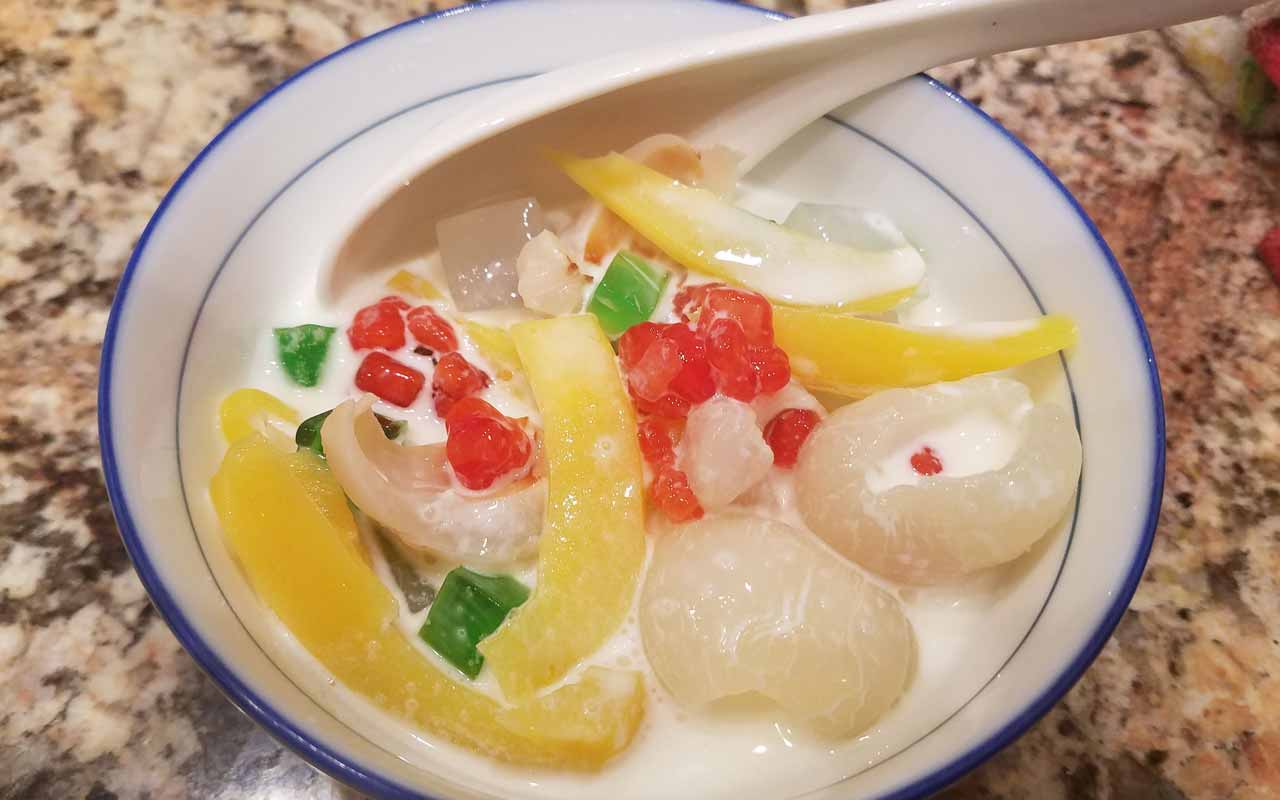
Chè Khúc bạch – Vietnamese Panna Cotta
- Form: Condensed Soup
- Serve: Warm or Cold
- Price Range: 8,000- 10,000 VND/ serving (approx. $0.36- $0.45)
“Chè Khúc bạch” is similar to panna cotta in some ways, but it is characterized by its lychee soup, which is moderately sweet and quite refreshing. This exquisite delicacy also contains toasted sliced almonds, which offer an extra fragrant taste.
Aside from lychee, you may personalize your “Chè Khúc bạch” bowl with a variety of fresh fruit toppings such as jackfruit, strawberry, kiwi, and so on. The possibilities are nearly limitless!
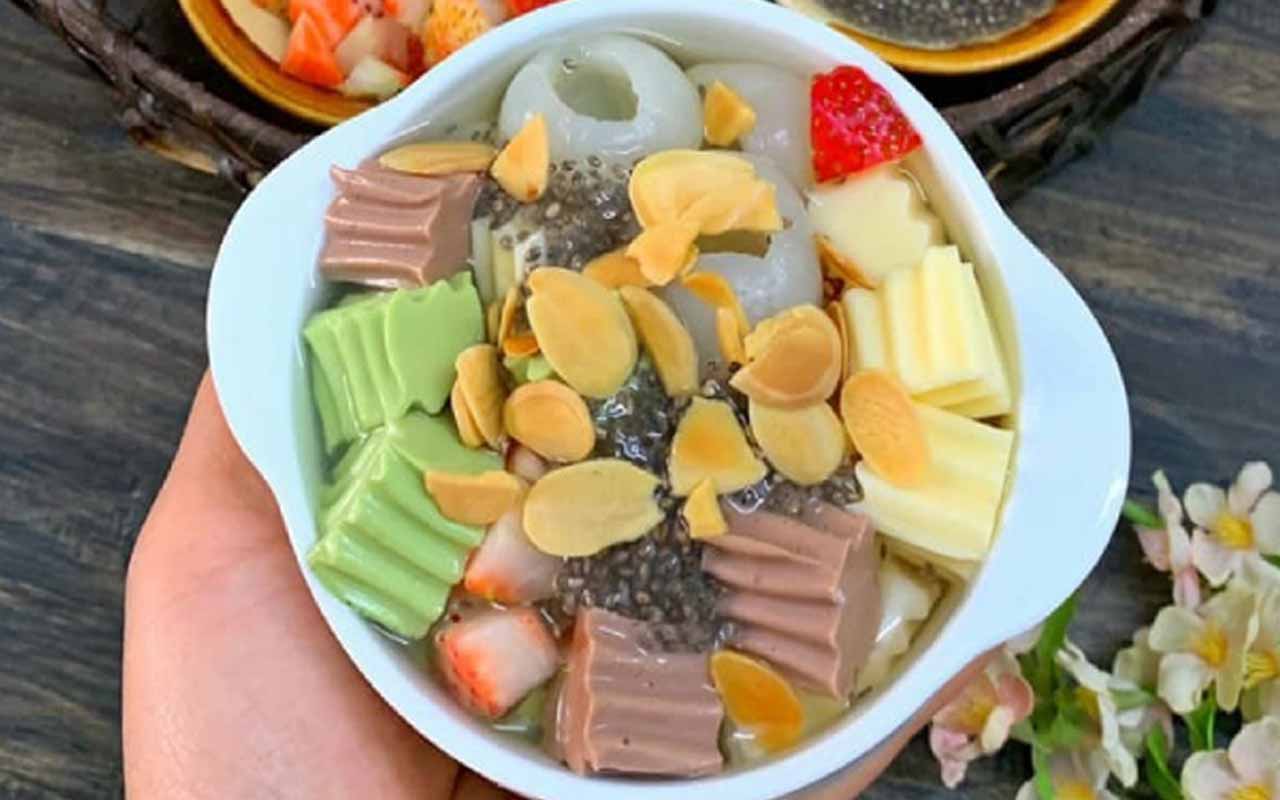
Chè Xoài – Delicious Sweet from the Mango
- Form: Condensed Soup
- Serve: Warm or Cold
- Price Range: 10,000- 20,000 VND/ serving (approx. $0.4- $0.85)
“Chè Xoài” is sweet and sour, with the sour taste of mango, the softness of “bt báng,” and, most interestingly, drink a few pieces of fresh and tasty mango to enable family members to cool off on a hot summer day.
“Chè Xoài” began in Hong Kong, and the owner bravely added the recipe, along with a little ingenuity, to the mix. “Chè Xoài” is created from ripe yellow mangoes; half of the juice is squeezed, the rest is chopped, and then boiled with jelly.
In small bowls, the mango is left to cool overnight, frozen like jelly, shiny and cool to the eye. The creation here is the layer of full cream milk that is cleverly sprinkled on the surface of the tea bowl. Using a small spoon, cut a piece of “Chè Xoài”, feel the cool taste of freshly ground mango, the greasy and sweet taste of milk, diners can eat forever without getting bored…
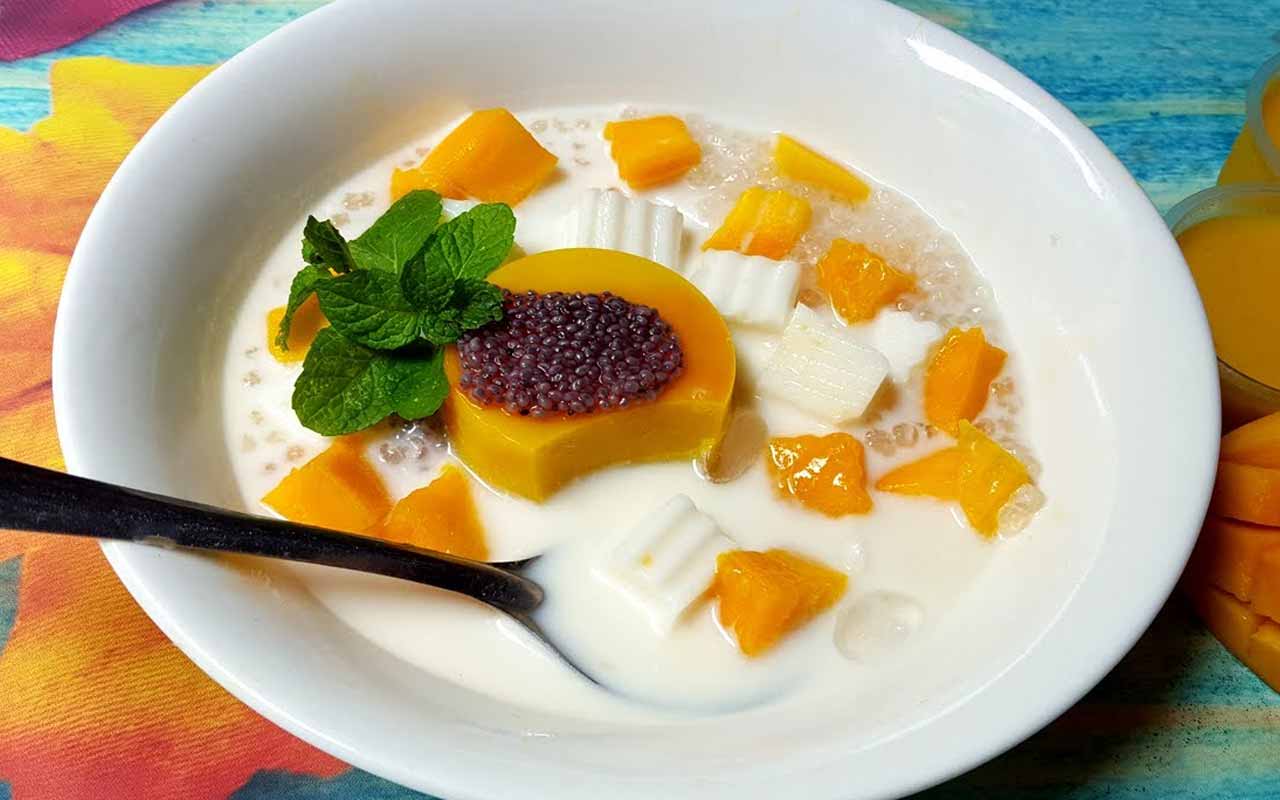
Vietnamese sweets desserts including Che, are not only a refreshing treat on a balmy day but an adventure in texture and flavor. So it is no surprise that there are 4 of Vietnamese Che was promoted at 15 sweet snacks you must taste on your travels in Vietnam. (Source). If you can’t enjoy all of the Vietnamese desserts in the list above, at least try one.

